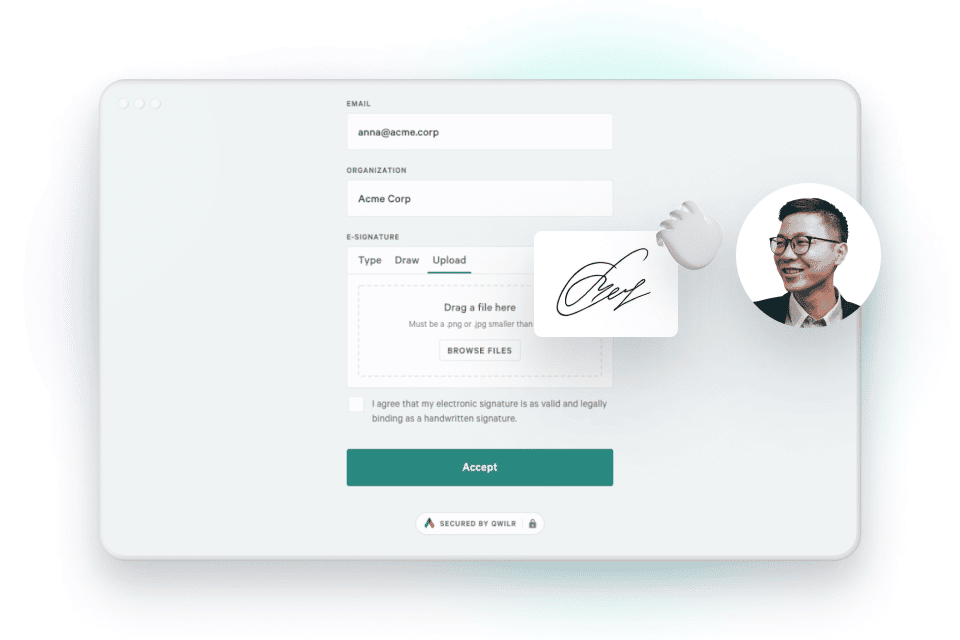Hello, document strategists.
In 2025, e-signatures aren’t just about convenience - they’re the handshake of modern business. The real question isn’t whether to use one, but which one fits your workflow best.
Adobe Sign, Docusign, and Dropbox Sign (formerly known as HelloSign) each bring their own rhythm to the signing dance, from enterprise precision to startup simplicity. This guide cuts through the noise with a clear, in-depth comparison to help you find the perfect signing partner.
Origins & core philosophy
Understanding a platform’s origins helps explain its design, workflow focus, and ideal use case.
Adobe Sign
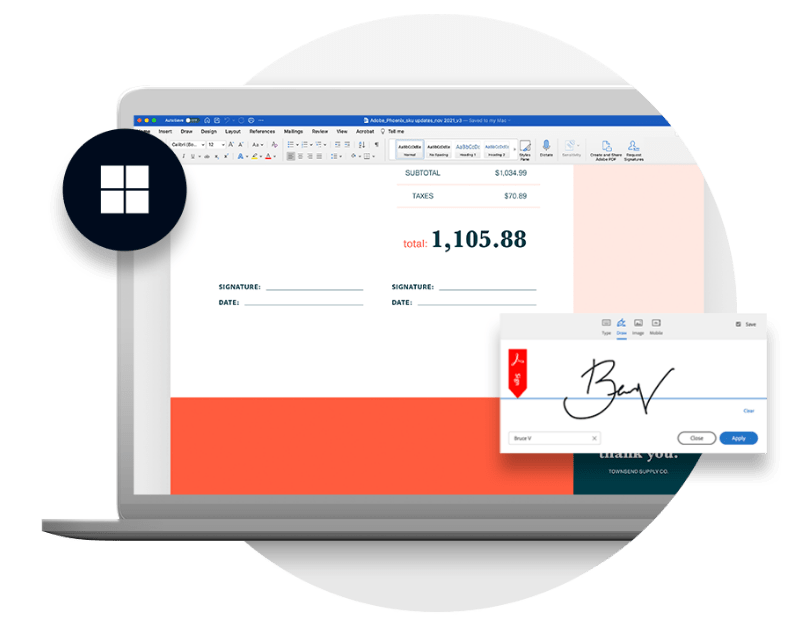
Adobe Sign is built on Adobe’s deep expertise in digital documents, designed for enterprises where signature workflows are part of a broader document lifecycle. Key points include:
- Seamless integration with Acrobat and Microsoft 365
- Focus on ecosystem synergy, making signatures one part of a connected workflow
- Ideal for teams that need robust document creation, routing, and tracking
Docusign
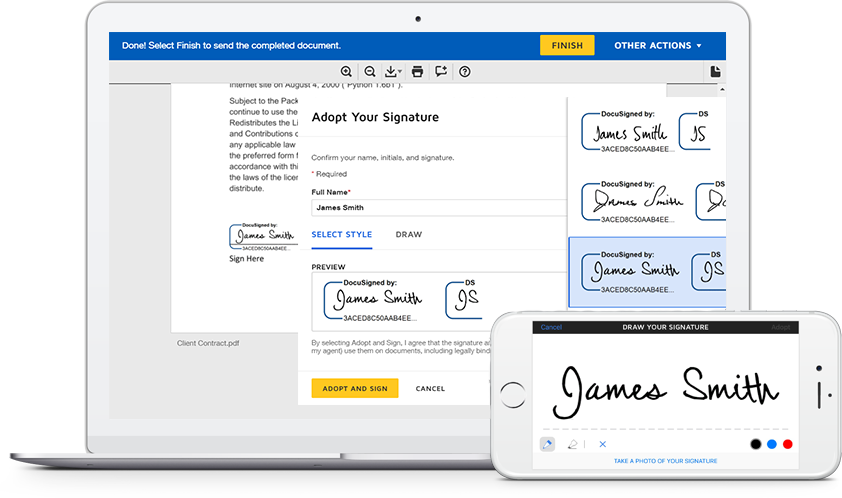
Docusign, a pioneer in e-signatures, follows a “signature-first” philosophy. It prioritizes trust, auditability, and legal compliance. Highlights:
- Ensures documents are legally binding, secure, and verifiable
- Expanded into contract lifecycle management while retaining compliance-focused DNA
- Perfect for organizations where precision and regulatory adherence are critical
Dropbox Sign (formerly HelloSign)
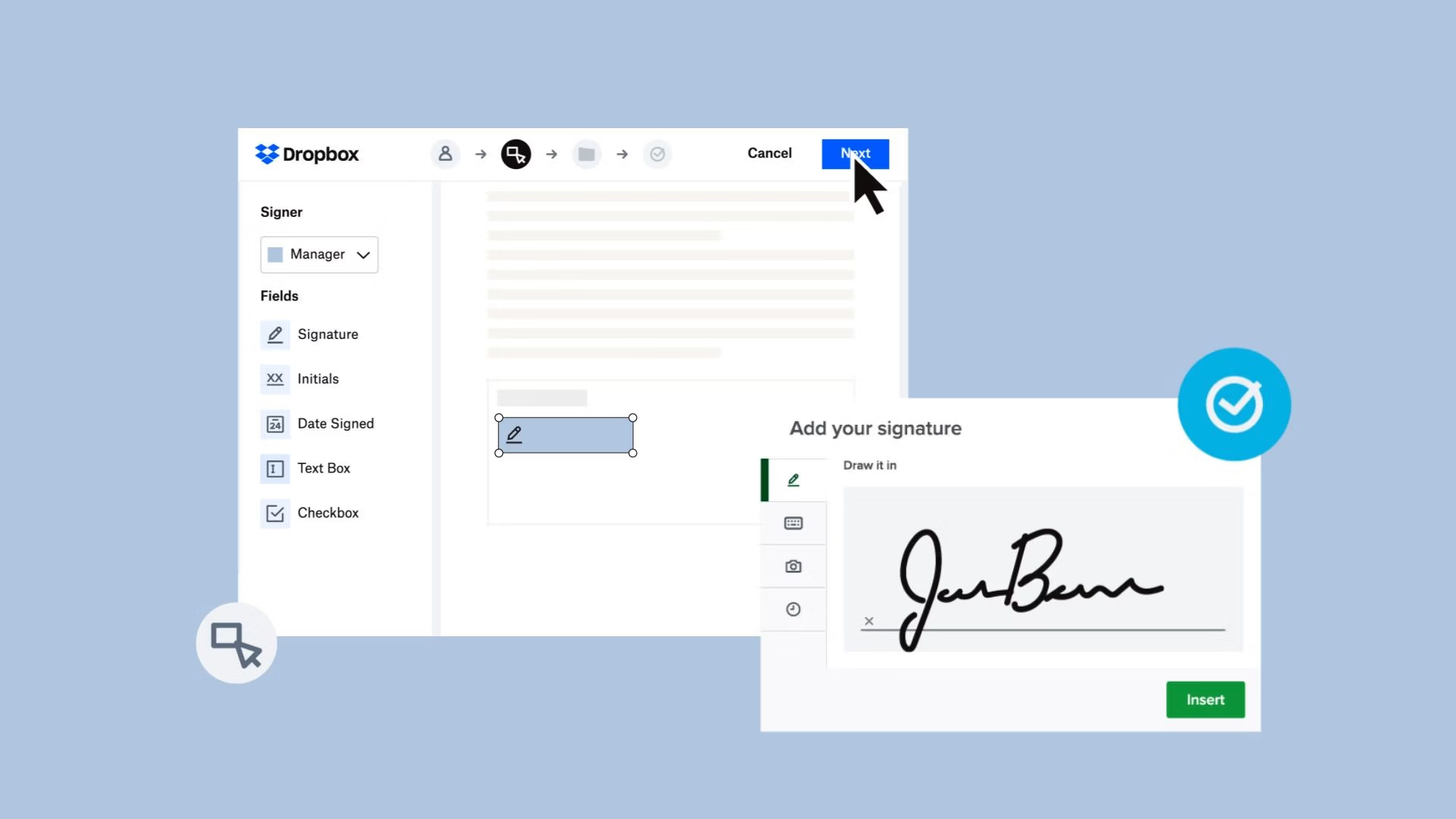
Dropbox Sign emphasizes simplicity, speed, and minimal friction. It’s cloud-native and highly user-friendly, appealing to small-to-medium teams and startups. Key takeaways:
- Rapid adoption with straightforward signing workflows
- Focuses on ease-of-use rather than deep customization
- Best suited for teams that need efficiency over complex enterprise features
Read next: Adobe Sign versus Docusign
Workflow & user experience
Beyond raw features, day-to-day usability is critical. Platforms must be intuitive enough to ensure adoption while supporting the workflow complexity required by the business.
Adobe Sign offers a polished, enterprise-ready interface. Its integration with Acrobat allows advanced PDF editing, annotations, and pre-populated forms. Teams heavily embedded in Microsoft 365 benefit from automated routing, conditional approvals, and bulk sending. The trade-off is setup complexity; smaller teams may feel overwhelmed by the breadth of administrative options.
Docusign strikes a balance between sophistication and usability. Dashboards provide clear visibility into signing status, routing, and audit trails. Conditional logic enables tailored workflows for different departments or document types. While an advanced setup is needed to unlock enterprise modules, the interface remains accessible and well-structured.
Dropbox Sign shines in simplicity. Its drag-and-drop document preparation, clear template creation, and mobile-first design make onboarding fast. While it lacks advanced analytics and routing found in Adobe and Docusign, Dropbox Sign reduces friction for small and medium-sized teams needing quick deployment.
Feature deep dive
Document creation & editing
Adobe Sign feels like a creative studio built for document craftsmanship. With native PDF creation, editing, annotation, and form tools, it’s a haven for teams who live and breathe documentation. Integrating tightly with Acrobat, it lets users draft, refine, and circulate professional-grade PDFs without ever leaving familiar ground—perfect for organizations that value polish and precision.
Docusign operates more like a sleek command center for signing rather than creating. Its design philosophy focuses on clarity and efficiency—you upload, adjust what’s necessary, and send. For teams that already have well-defined templates and just need a legally airtight signature workflow, this keeps processes streamlined and predictable.
Dropbox Sign takes a minimalist, cloud-native approach. Think of it as the “Google Docs” of the e-signature world. You upload, drop in signature fields, and get it done. It doesn’t try to be a design suite; instead, it champions speed and accessibility. For small teams or startups moving fast, that’s a feature, not a flaw—simplicity that clears the clutter from document prep.
Templates & reusable components
Templates are the building blocks of efficiency, and each platform approaches them in its own way.
Adobe Sign offers a robust templating system that integrates with Adobe Experience Manager, letting large organizations create living, reusable document frameworks. It’s perfect for teams that need consistency across multiple departments, where every NDA, contract, or form needs to look identical down to the pixel.
Docusign brings brains to its templates. Clause libraries, conditional logic, and adaptive workflows mean documents can evolve based on deal type or region. It’s a system that rewards structure, a digital architect for organizations with intricate compliance and approval needs.
Dropbox Sign keeps templates approachable and easy to use. You can quickly save and reuse standard agreements, onboarding forms, or invoices - without needing to wade through complex logic trees. For fast-moving businesses where speed outweighs bureaucracy, Dropbox Sign’s “set it once, use it forever” simplicity is exactly what you want.
E-signature & routing
At the core of every platform lies the signature—the digital handshake that seals the deal.
Adobe Sign builds entire workflows around that handshake. Automated routing, reminders, and multi-step approvals make it a powerhouse for departments juggling complex sign-off chains. Its mobile interface keeps momentum going, whether you’re in the office or halfway through a red-eye flight.
Docusign approaches routing like an air traffic controller: precise, layered, and fully auditable. Multi-factor authentication, custom workflows, and timestamped audit trails make it the go-to for industries where every signature must stand up in court.
Dropbox Sign takes a refreshingly human approach. It’s built for straightforward, high-volume signing: proposals, HR forms, quick client approvals. The routing tools are intuitive, not intimidating, letting users send, track, and finalize documents in minutes. Its strength lies in agility, making it perfect for lean teams that need to keep business flowing fast.
Collaboration & redlining
Document collaboration and tracking can feel like a messy group project… unless the right tools are in place.
Adobe Sign supports comments and light collaboration through Acrobat, allowing feedback loops within familiar tools. While deep contract redlining happens best through integrations, it fits seamlessly into existing enterprise document ecosystems.
Docusign raises the bar with its Contract Lifecycle Management (CLM) suite. Version tracking, redlining, and multi-party negotiation features make it indispensable for legal and finance teams managing detailed contracts. It’s not just signing - it’s governance at scale.
Dropbox Sign is the minimalist collaborator. For teams that work in sync, think startups, design firms, or small agencies, it keeps the signing experience clean and interruption-free. It doesn’t overcomplicate teamwork; it complements it, offering a frictionless approval process that lets collaboration happen upstream, not inside the platform itself.
Workflow Automation
If signatures are the heartbeat, automation is the circulatory system - keeping everything moving efficiently.
Adobe Sign offers sophisticated workflow automation, complete with conditional logic, bulk sending, and enterprise-grade approval routing. It’s a fit for organizations that thrive on structure - those who want every step documented, every approval seamless, every signature predictable.
Docusign takes automation into orchestration territory. Integrated with CLM, it supports complex, rule-based workflows that span departments and continents. Enterprises that handle thousands of documents simultaneously will find its logic-driven approach indispensable.
Dropbox Sign focuses on smart simplicity. Automation here feels personal—intuitive notifications, simple routing, and effortless setup mean you can automate without becoming an automation engineer. For small teams, that translates to less time building processes and more time getting things signed.
Integrations & ecosystem fit
No platform exists in a vacuum. Its value grows when it plugs smoothly into the tools you already use.
Adobe Sign thrives in document-heavy ecosystems. With native integrations across Microsoft 365, Salesforce, Workday, and the full Adobe suite, it embeds itself naturally into existing enterprise workflows. For teams that live in Outlook or Acrobat, it feels like part of the furniture.
Docusign is the most flexible connector in the mix. Its open APIs and deep CRM/ERP integrations make it a natural fit for organizations with diverse tech stacks, the kind where marketing uses HubSpot, finance uses SAP, and operations runs on something custom-built. It adapts effortlessly.
Dropbox Sign fits beautifully into the modern, cloud-first toolkit. Seamless connections with Dropbox, Google Workspace, and Slack make it ideal for remote teams and startups. It doesn’t try to be everything; it focuses on integrating where teams already live and work—in fast, collaborative digital spaces.
Security & compliance
Behind every signature is trust: the invisible contract between parties and the platform that facilitates it.
Adobe Sign wears its enterprise credentials proudly. With SOC 2 Type II, ISO 27001, HIPAA, and FedRAMP compliance, it offers fortress-level protection. Identity verification and full audit trails give organizations in finance, healthcare, and government peace of mind that every transaction is verifiable and secure.
Docusign matches that strength, championing data protection through SOC 2, ISO 27001, GDPR, and eIDAS compliance. It adds multiple authentication layers and granular audit logs, making it the industry’s gold standard for regulated industries.
Dropbox Sign approaches security with thoughtful pragmatism. SOC 2, GDPR, and HIPAA compliance ensure data protection that satisfies most modern businesses without the overhead of enterprise governance. For teams that value both security and speed, it offers a balance of protection and usability.
Mobile experience
In today’s world, deals are signed between flights, on lunch breaks, or from the backseat of a cab. Mobility isn’t optional; it’s essential.
Adobe Sign delivers this flexibility through its Adobe Reader and Sign apps, blending mobile productivity with document management. It’s a full-featured experience. Edit, route, sign, and send with a few taps.
Docusign’s mobile experience feels polished and purpose-built. The app mirrors its desktop power: easy signing, real-time status tracking, and layered authentication for sensitive workflows. It’s built for professionals who can’t afford downtime.
Dropbox Sign focuses on ease of access. Its web and app interfaces are clean, fast, and reliable, ensuring users can sign and send from anywhere. For mobile-first teams, it’s lightweight and friction-free. Just open, tap, sign, and move on.
Analytics & tracking
Visibility turns signatures into strategy.
Adobe Sign leads with enterprise-grade insights: document progress, team metrics, and process efficiency are all visible in a unified dashboard. Managers can identify bottlenecks, measure ROI, and forecast trends, turning signatures into operational intelligence.
Docusign narrows in on legal precision, tracking every signature event, timestamp, and participant for compliance purposes. Its analytics lean toward governance and reporting, invaluable for audit trails and legal validation.
Dropbox Sign keeps it straightforward. You’ll know what’s sent, viewed, and signed—all without information overload. For most small and mid-sized businesses, that’s exactly enough visibility to stay informed and in control.
Support & training
Even the best technology needs the right human touch.
Adobe Sign offers robust enterprise onboarding, dedicated support teams, and SLAs—a true partnership model for organizations deploying at scale.
Docusign extends its support through deep online resources, certifications, and responsive enterprise assistance. It’s designed for teams who want to master the platform and optimize every feature.
Dropbox Sign delivers support that mirrors its software: approachable and agile. With fast-response chat and email help, plus a clear knowledge base, small teams can troubleshoot quickly and keep momentum.
Scalability
Last but not least. Growth is the real test of any platform’s design.
Adobe Sign scales seamlessly, from small departmental rollouts to global enterprise deployments. Its infrastructure and integrations evolve with you, not against you.
Docusign meets that challenge head-on, built for multinationals managing complex legal, financial, and compliance frameworks. It’s the trusted standard for organizations that can’t afford growing pains.
Dropbox Sign scales in a different way, through accessibility. For startups and mid-size businesses, it grows organically alongside your team, keeping workflows simple even as volumes increase. It’s not enterprise-heavy - it’s enterprise-ready when you are.
Recap feature comparison table
| Feature area | Adobe Sign | Docusign | Dropbox Sign | Notes |
|---|---|---|---|---|
Document creation & editing | Native PDF creation/editing, annotations, forms | Basic editing; relies on uploaded PDFs/templates | Limited editing; primarily upload & sign | Adobe excels in PDF-heavy workflows; Dropbox Sign prioritizes simplicity |
Templates & reusable components | Advanced templates, integrates with Adobe Experience Manager | Template/clause libraries, conditional logic | Basic templates, limited conditional logic | Docusign provides robust template reuse for enterprises |
E-Signature & routing | Automated routing, reminders, mobile signing, approvals | Signature-first, multiple authentication options, audit trails | Standard routing, reminders, mobile-ready | Docusign leads the way for compliance-heavy workflows |
Collaboration & redlining | Commenting via Acrobat, some integrations required | Supported via CLM modules | Minimal collaboration | Adobe & Dropbox Sign less suitable for negotiation-heavy contracts |
Workflow automation | Conditional logic, bulk sending, enterprise approvals | Advanced workflow builder, CLM integration | Basic notifications & routing | Docusign offers the most sophisticated enterprise workflow options |
Integrations & ecosystem | Microsoft 365, Salesforce, Workday, Google Drive | CRM/ERP integrations, extensive APIs | Dropbox, Google Workspace, Slack | Adobe best for Microsoft/Adobe environments; Docusign for diverse IT stacks |
Security & compliance | SOC 2 Type II, ISO 27001, HIPAA, FedRAMP | SOC 2, ISO 27001, GDPR, eIDAS | SOC 2, GDPR, HIPAA-ready | Docusign & Adobe preferred for regulated industries |
Mobile experience | Adobe Reader + Sign app | Optimized for multiple devices | Web-based mobile & app | All strong; Adobe benefits from Acrobat ubiquity |
Analytics & tracking | Document progress, completions, team usage insights | Signature status, timing, audit logs | Basic tracking | Adobe provides the most enterprise-level insights |
Support & training | Dedicated onboarding, enterprise SLA | Extensive online resources & enterprise support | Email/chat support, knowledge base | Docusign and Adobe superior for large deployments |
Scalability | High; supports multi-department & complex workflows | High; global deployments & multi-team integrations | Moderate; best for cloud-native teams | Dropbox Sign may hit limits for very large enterprises |
Pricing & value
Before diving into the fine print, it’s worth noting that each platform prices according to its design philosophy. Adobe Sign leans into enterprise-grade sophistication, Docusign scales with modular precision, and Dropbox Sign keeps things refreshingly accessible for lean teams. Here’s how the numbers stack up:
| Tool | Entry Plan | Mid-Tier/Business Plan | Notes & Conditions |
|---|---|---|---|
Adobe Sign | Acrobat Standard Individual: $12.99/user/month | Acrobat Pro Teams: $22.19/user/month | Annual billing; enterprise pricing negotiated individually |
Docusign | Personal: $10/month (5 envelopes) | Business Pro: $40/user/month | Advanced modules (CLM, bulk send, payment request) increase costs |
Dropbox Sign | Essentials: $15/user/month | Standard: $25/user/month | API and advanced workflow features add cost |
Pricing analysis
Adobe Sign is the premium option, offering the richest feature set for enterprises that need deep integrations, layered compliance, and scalable workflows. Costs reflect its robust functionality, especially when paired with Acrobat’s editing and admin tools.
Docusign uses a modular model, letting organizations start small and add CLM, identity verification, or payment modules as needed. This flexible approach suits compliance-heavy industries, though total costs can rise with added features.
Dropbox Sign stays true to simplicity. With transparent, predictable pricing, it’s ideal for small businesses and startups seeking quick deployment and strong value without enterprise overhead. While less complex, it excels in ease of adoption and cost-effectiveness for everyday signing.
Where Qwilr fits in: An all-round alternative
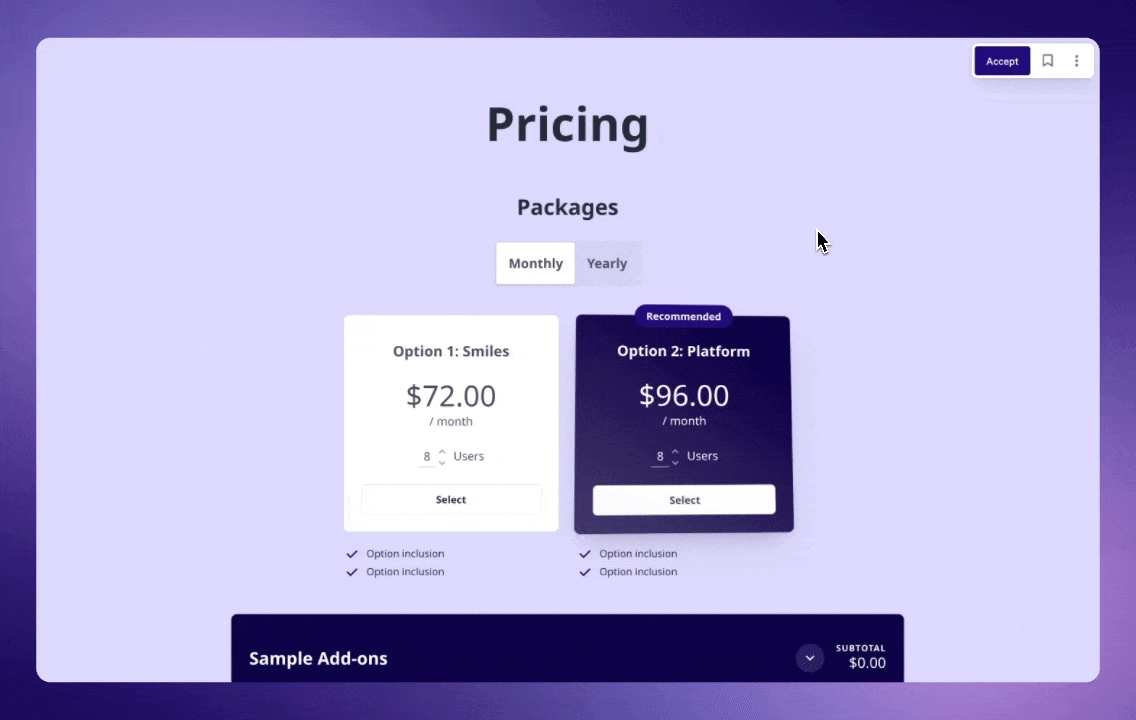
While Adobe Sign, Docusign, and Dropbox Sign revolve around the digital equivalent of paper contracts—PDF uploads, email routing, and electronic authentication—Qwilr takes a different approach altogether.
Qwilr isn’t just an e-signature tool; it’s a document experience platform designed for sales, marketing, and customer-facing teams that want to engage prospects, not just get them to sign. (Poetic, indeed). Where traditional e-signature tools feel transactional, Qwilr makes every proposal, quote, or contract feel like a branded, interactive experience, complete with videos, dynamic pricing tables, embedded links, and instant payment options.
Qwilr’s web-based documents eliminate the need for static attachments. Recipients can view, sign, and pay within the same browser tab—no downloads, no plugins, no version confusion. The built-in e-signature feature ensures contracts are legally binding, while QwilrPay, the native payment tool, is integrated for collecting deposits or full payments right after signature.
Beyond signing, Qwilr provides deep engagement analytics: showing when a document was opened, which sections were read, and how long a recipient lingered on key pricing blocks. These insights turn documents into measurable touchpoints, allowing sales teams to follow up strategically, not blindly.
Why Qwilr stands apart
- Interactive over static: While others manage documents, Qwilr transforms them into interactive web pages.
- End-to-end flow: Create, share, sign, and collect payment, all in one platform.
- Designed for customer experience: Every Qwilr page is branded, on-message, and dynamic.
- Actionable insights: Built-in tracking and analytics replace the guesswork of “Has the client seen this yet?”
- Enterprise-ready: Role-based permissions, template-level settings, deep automations, and custom branding.
Qwilr’s pricing starts at $35 per user/month for the Business plan and $59 per user/month for the Enterprise tier, offering access to advanced branding, analytics, and CRM integrations—a premium yet scalable option for growing sales teams.

4-Way Comparison: Adobe Sign vs Docusign vs Dropbox Sign vs Qwilr
We’ll leave you with a 4-way comparison. If the stars align, you’ll find your best tool.
| Tool | Core Strength | Best For | Creation & Design | E-Signature | Analytics |
|---|---|---|---|---|---|
Adobe Sign | Enterprise-level PDF workflows | Large organizations & enterprises | Built for teams that live in PDFs - advanced editing, annotations, and form creation within Acrobat. | ★★★★★ | ★★★★☆ |
Docusign | Legal-grade compliance & trust | Legal, finance, and global enterprises | Focused on structured, template-based document creation with strong version control and auditability. | ★★★★★ | ★★★★☆ |
Dropbox Sign | Simplicity & quick setup | SMBs & startups | Streamlined upload-and-sign experience - minimal setup, clean interface, and fast execution. | ★★★★☆ | ★★★☆☆ |
Qwilr | Interactive, branded documents | Sales & marketing teams | Transforms static docs into interactive web pages - rich media, dynamic layouts, and personalized branding. | ★★★★☆ | ★★★★★ |
About the author

Brendan Connaughton|Head of Growth Marketing
Brendan heads up growth marketing and demand generation at Qwilr, overseeing performance marketing, SEO, and lifecycle initiatives. Brendan has been instrumental in developing go-to-market functions for a number of high-growth startups and challenger brands.


